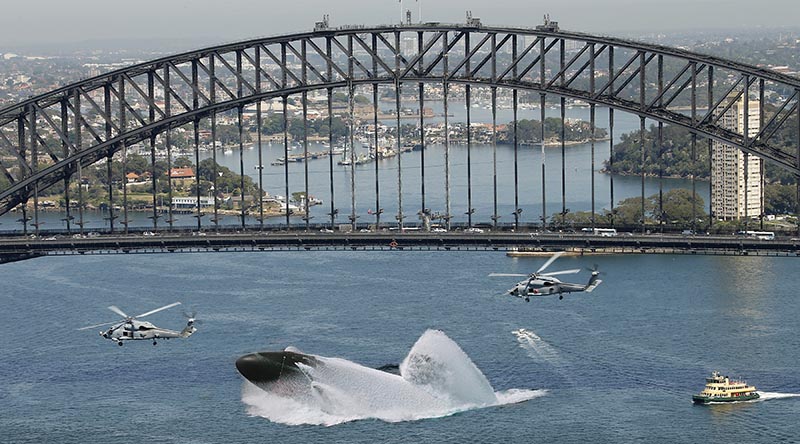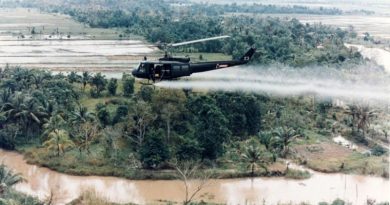“Nuclear submarines beyond Australian-industry skillsets” – peak welding body
Share the post "“Nuclear submarines beyond Australian-industry skillsets” – peak welding body"

On 16 September, Prime Minister Scott Morrison announced that Australia would no longer proceed with the Attack Class conventional submarine program to be built by Naval Group. Instead, Australia is set to build at least eight nuclear-powered submarines after striking a trilateral security agreement with the United States and the United Kingdom.
FILE IMAGE: Digital composite by CONTACT
News of the termination of the $90 billion Naval Group contract was the single largest Australian defence industry announcement since the award of that very same contract. When the contract was awarded to Naval Group in 2016, it was quite contentious. Contract negotiations were tough, with some terms and conditions still not finalised five years on. Delays and cost overruns became inevitable.
However, the cancellation of Naval Group’s contract is even more contentious, particularly given the Federal Government’s nuclear-powered replacement plans.
Australia will need to rely heavily on the experience, skills and technology of the United States and the United Kingdom in building and maintaining these nuclear submarines because we do not have a local nuclear industry. We don’t have infrastructure, skills or experience in nuclear power—and none of this can be created overnight.
There was general consensus that building the Attack Class Submarines would be a challenge for Australian industry—building nuclear powered submarines presents an inordinate number of issues. The skills, knowledge and expertise required to build a submarine are akin to those required to build a space craft chartered for the moon. Building a nuclear submarine is equivalent to building a space craft set for Mars and beyond. It is an entirely new quantum.
Local Content Requirements
Without an existing nuclear industry, it will be difficult for any defence prime contractor building these nuclear-powered submarines to meet the local industry content requirements that are included in all Defence contracts.
While ambitious, the Federal Government’s local content requirements are of enormous benefit to Australian industry. However, without exception, they have been extremely difficult to execute effectively on recent Defence projects. There are a number of reasons for this difficulty.
Firstly, the Defence projects are extraordinarily complex, requiring a highly skilled workforce, investments in cutting-edge technology and rapid upskilling. Secondly, the companies delivering these projects are global entities, with priorities that extend beyond Australia’s borders.
Lastly, and perhaps most significantly, several of these major Defence projects were announced simultaneously. Local industry hasn’t been given the opportunity to keep up with the speed and scale of delivery expected. In some areas, and across some skillsets, there are gaps in the local industry. And this is in industries in which Australia already has proven experience—let alone nuclear power.
Mandating local industry content requirements is a powerful government tool that affords many benefits, but it is impossible to create industry capability and capacity overnight. As a result, the defence prime contractors can find themselves stuck between a rock and a hard place—the balance between delivering on time and on budget, and meeting local industry content requirements becomes unworkable.
A Lack of Local Skills
While the Prime Minister has stated that the nuclear-powered submarines will be built in Adelaide, it’s not yet clear whether this will involve manufacturing, or just assembly of US or UK supplied parts. Although, given that there are no welders in Australia certified to the Standards required for nuclear welding, it’s unlikely that manufacture will occur in Adelaide. This will obviously impact local industry content requirements, as well as upskilling, technology transfer and the shipbuilding workforce in general.
Not only that, Australia will need to invest in a whole gamut of infrastructure capable of handling nuclear reactors during both the construction and maintenance phases. It’s highly unlikely that the people of Port Adelaide will warm to a nuclear facility located on their back doorstep. So, where is the Federal Government planning to situate this facility?
All this is compounded by a lack of skilled nuclear engineers and captains. It takes years and years of experience to captain a nuclear submarine; Australia effectively needs mariners in training now to ensure they’re ready to captain submarines when construction is complete. Australia already struggles to crew its Collins Class submarines, which need up to 50 people aboard. The US Fast Attack submarines require crews of around 130 people. How will Australia bridge this shortfall?
Given all these challenges, the timeframe for having nuclear powered submarines battle-ready is quite extended. It is unlikely they would be in the water until the 2040s, at which time the technology could already be obsolete. Plus, in the meantime, the lifespan of the Collins Class fleet will have to be extended beyond recommended years.
No Simple Solution
While I fully support the local industry content premise, in practice it is just not delivering what the Federal Government intended. While the contract with Naval Group may not have been perfect, the Federal Government’s plan for nuclear submarines is beyond the existing skillsets of Australia’s local industry.
The question now is: should the taxpayer be forced to cover the cost of the Federal Government’s pipedream project?
Or, will the Federal Government purchase nuclear submarines from our allies in the United States and United Kingdom? The Morrison Government has already set a precedence for this—quietly shelving their plans to build the Pacific Support Vessel in Australia, and instead purchasing it next year to fast-track its deployment.
Finally, with so much work available for local industry in the wake of recent onshoring motivated by COVID-19 import delays, are local contractors willing to take on defence industry work, which is notorious difficult to win, let alone deliver?
While there is no simple solution, the construction, operation and maintenance of nuclear submarines without a local nuclear industry will be challenging. Industry will need to stand by for clarification from the Federal Government.
If you have invested time and money into preparing for the Naval Group submarine project, I’d be interested to hear about your experiences. Contact me via g.crittenden@weldaustralia.com.au.
About Weld Australia
Weld Australia represents the welding profession in Australia. Its members are made up of individual welding professionals and companies of all sizes. Weld Australia members are involved almost every facet of Australian industry and make a significant contribution to the nation’s economy. The primary goal of Weld Australia is to ensure that the Australian welding industry remains locally and globally competitive, both now and into the future. Weld Australia is the Australian representative member of the International Institute of Welding (IIW). For more information or to join Weld Australia, please visit: www.weldaustralia.com.au.
.
.

.
.
Share the post "“Nuclear submarines beyond Australian-industry skillsets” – peak welding body"





